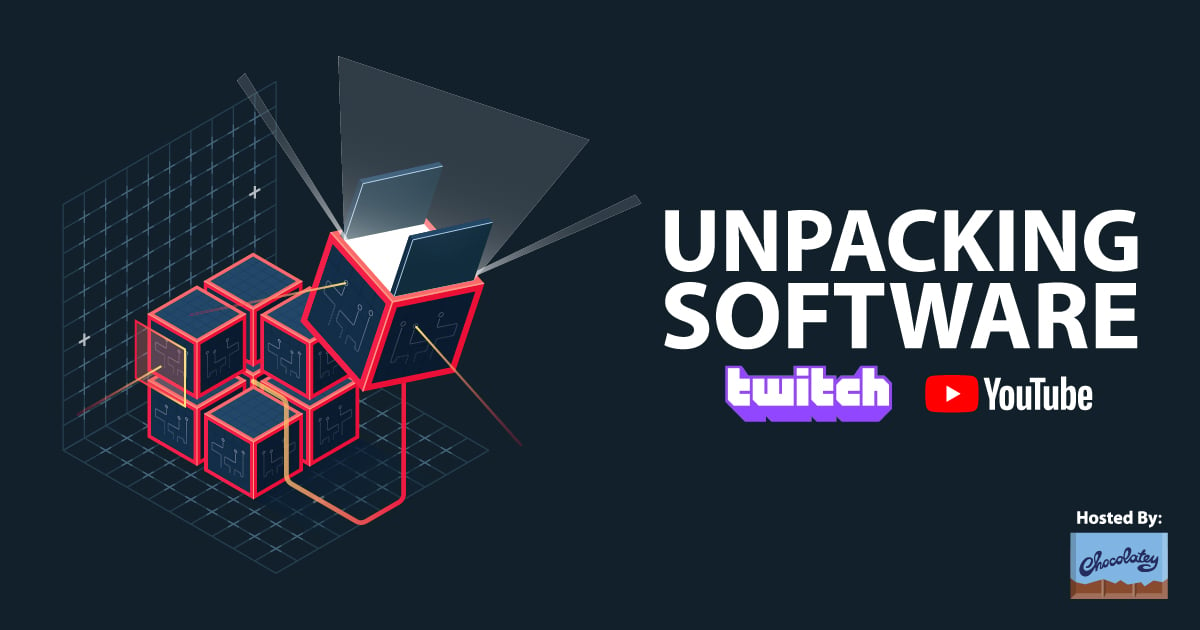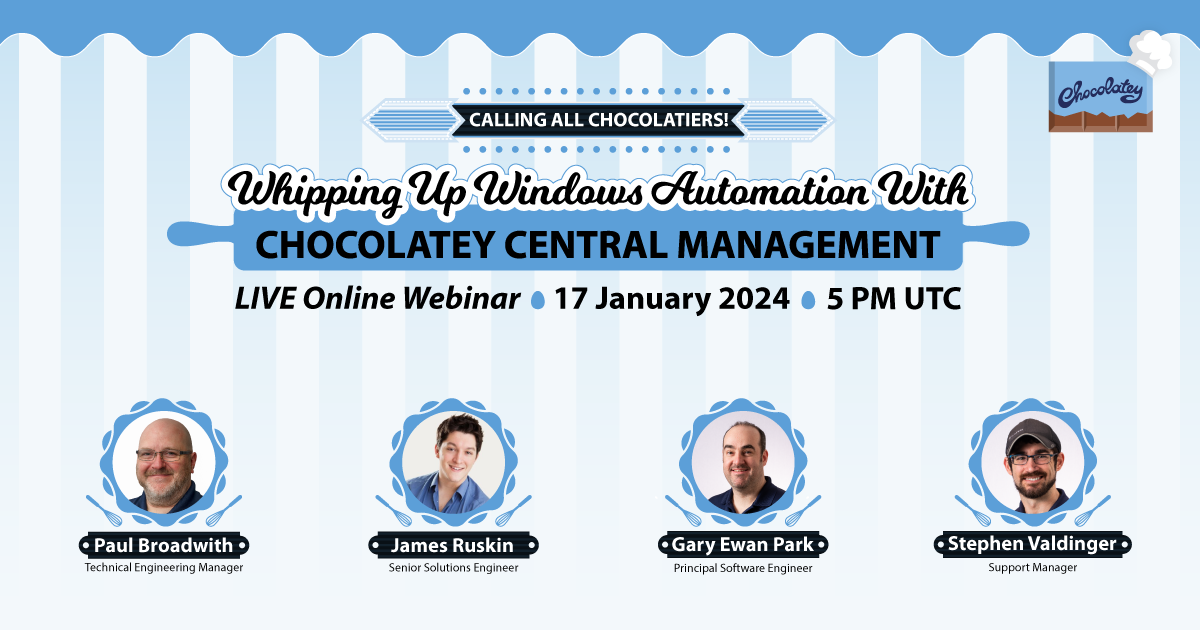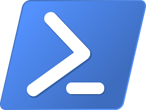
Downloads:
462,431
Downloads of v 15.0.2000.20200604:
37,593
Last Update:
04 Jun 2020
Package Maintainer(s):
Software Author(s):
- Microsoft Corporation
Tags:
Microsoft SQL Server 2019 Developer Edition
This is not the latest version of Microsoft SQL Server 2019 Developer Edition available.
- 1
- 2
- 3
15.0.2000.20200604 | Updated: 04 Jun 2020
Downloads:
462,431
Downloads of v 15.0.2000.20200604:
37,593
Maintainer(s):
Software Author(s):
- Microsoft Corporation
Microsoft SQL Server 2019 Developer Edition 15.0.2000.20200604
This is not the latest version of Microsoft SQL Server 2019 Developer Edition available.
Legal Disclaimer: Neither this package nor Chocolatey Software, Inc. are affiliated with or endorsed by Microsoft Corporation. The inclusion of Microsoft Corporation trademark(s), if any, upon this webpage is solely to identify Microsoft Corporation goods or services and not for commercial purposes.
- 1
- 2
- 3
This Package Contains an Exempted Check
Not All Tests Have Passed
Deployment Method: Individual Install, Upgrade, & Uninstall
To install Microsoft SQL Server 2019 Developer Edition, run the following command from the command line or from PowerShell:
To upgrade Microsoft SQL Server 2019 Developer Edition, run the following command from the command line or from PowerShell:
To uninstall Microsoft SQL Server 2019 Developer Edition, run the following command from the command line or from PowerShell:
Deployment Method:
This applies to both open source and commercial editions of Chocolatey.
1. Enter Your Internal Repository Url
(this should look similar to https://community.chocolatey.org/api/v2/)
2. Setup Your Environment
1. Ensure you are set for organizational deployment
Please see the organizational deployment guide
2. Get the package into your environment
Option 1: Cached Package (Unreliable, Requires Internet - Same As Community)-
Open Source or Commercial:
- Proxy Repository - Create a proxy nuget repository on Nexus, Artifactory Pro, or a proxy Chocolatey repository on ProGet. Point your upstream to https://community.chocolatey.org/api/v2/. Packages cache on first access automatically. Make sure your choco clients are using your proxy repository as a source and NOT the default community repository. See source command for more information.
- You can also just download the package and push it to a repository Download
-
Open Source
-
Download the package:
Download - Follow manual internalization instructions
-
-
Package Internalizer (C4B)
-
Run: (additional options)
choco download sql-server-2019 --internalize --version=15.0.2000.20200604 --source=https://community.chocolatey.org/api/v2/ -
For package and dependencies run:
choco push --source="'INTERNAL REPO URL'" - Automate package internalization
-
Run: (additional options)
3. Copy Your Script
choco upgrade sql-server-2019 -y --source="'INTERNAL REPO URL'" --version="'15.0.2000.20200604'" [other options]See options you can pass to upgrade.
See best practices for scripting.
Add this to a PowerShell script or use a Batch script with tools and in places where you are calling directly to Chocolatey. If you are integrating, keep in mind enhanced exit codes.
If you do use a PowerShell script, use the following to ensure bad exit codes are shown as failures:
choco upgrade sql-server-2019 -y --source="'INTERNAL REPO URL'" --version="'15.0.2000.20200604'"
$exitCode = $LASTEXITCODE
Write-Verbose "Exit code was $exitCode"
$validExitCodes = @(0, 1605, 1614, 1641, 3010)
if ($validExitCodes -contains $exitCode) {
Exit 0
}
Exit $exitCode
- name: Install sql-server-2019
win_chocolatey:
name: sql-server-2019
version: '15.0.2000.20200604'
source: INTERNAL REPO URL
state: present
See docs at https://docs.ansible.com/ansible/latest/modules/win_chocolatey_module.html.
chocolatey_package 'sql-server-2019' do
action :install
source 'INTERNAL REPO URL'
version '15.0.2000.20200604'
end
See docs at https://docs.chef.io/resource_chocolatey_package.html.
cChocoPackageInstaller sql-server-2019
{
Name = "sql-server-2019"
Version = "15.0.2000.20200604"
Source = "INTERNAL REPO URL"
}
Requires cChoco DSC Resource. See docs at https://github.com/chocolatey/cChoco.
package { 'sql-server-2019':
ensure => '15.0.2000.20200604',
provider => 'chocolatey',
source => 'INTERNAL REPO URL',
}
Requires Puppet Chocolatey Provider module. See docs at https://forge.puppet.com/puppetlabs/chocolatey.
4. If applicable - Chocolatey configuration/installation
See infrastructure management matrix for Chocolatey configuration elements and examples.
This package was approved as a trusted package on 04 Jun 2020.
Whether your data is structured or unstructured, query and analyze it using the data platform with industry-leading performance and security.
What you'll love about SQL Server 2019
Analyze every type of data
Gain insights from all your data by querying across relational, non-relational, structured, and unstructured data, for a complete picture of your business using SQL Server 2019 with Apache Spark built in.
Choose your language and platform
Get the flexibility to use the language and platform of your choice with open source support. Run SQL Server on Linux containers with Kubernetes support or on Windows.
Rely on industry-leading performance
Take advantage of breakthrough scalability and performance to improve the stability and response time of your database—without making app changes. Get high availability for mission-critical applications, data warehouses, and data lakes.
Trust nine years of proven security leadership
Achieve your security and compliance goals using the database rated as least vulnerable over the last nine years. Stay a step ahead using built-in features for data classification, data protection, and monitoring and alerts [1].
Make faster, better decisions
Turn data into answers using the enterprise reporting capabilities of SQL Server Reporting Services along with the included Power BI Report Server, which gives your users access to rich, interactive Power BI reports on any device.
Operating System requirements for SQL Server Developer
- Windows 10 TH1 1507 or greater
- Windows Server 2016 or greater
Package Specific
Package notes
This package will install SQL Server 2019 Developer Edition using an existing .iso file. If a path to an existing .iso is not supplied, it downloads the same .iso that can be obtained from the SQL Server Basic Installer's Download Media menu.
The initial release of this package is focused on installing and uninstalling a default instance of SQL Server 2019 Developer Edition.
Future plans include better support for non-default instances (including uninstalling).
Note that the install script makes use of Mount-DiskImage as the minimum OS requirements for SQL Server include this cmdlet.
Package Parameters
The following package parameters can be set:
/IsoPath:- path to a local copy of the .iso file - if not supplied then .iso is downloaded/IgnorePendingReboot- don't check for pending reboot (Warning, SQL Server installation may fail if reboots are pending)
All other package parameters are passed through to SQL Server Setup, allowing you to customise the installation as necessary.
The following are set by default:
/ConfigurationFile:- The path to a configurationfile.ini - defaults to the supplied tools\configurationfile.ini/SQLSYSADMINACCOUNTS:- The usernames to add to the SQL SysAdmin role - defaults to current user
See https://docs.microsoft.com/en-us/sql/database-engine/install-windows/install-sql-server-from-the-command-prompt#Install for the full list of parameters supported by SQL Server.
To pass parameters, use --params "''" (e.g. choco install sql-server-2019 [other options] --params="'/ITEM:value /ITEM2:value2'").
Example using /IsoPath to use previously downloaded SQL Server .iso
choco install sql-server-2019 --params="'/IsoPath:c:\downloads\SQLServer2019-x64-ENU-Dev.iso'"
Chocolatey Pro / Business users
If you allow the package to download the ISO file, it is suggested you run Chocolatey with the --skip-virus-check parameter, as the online virus scanner doesn't handle files over 500MB. You should use alternate methods of scanning in this case.
Get-Service MSSQLSERVER -ErrorAction SilentlyContinue | Stop-Service$ErrorActionPreference = 'Stop';
$setupARPPath = ((Get-ItemProperty 'HKLM:\SOFTWARE\Microsoft\Windows\CurrentVersion\Uninstall\Microsoft SQL Server SQL2019').UninstallString).Replace("`"", "")
$setupPath = [IO.Path]::Combine([IO.Path]::GetDirectoryName([IO.Path]::GetDirectoryName($setupARPPath)), "setup.exe")
$packageArgs = @{
packageName = $env:ChocolateyPackageName
fileType = 'EXE'
file = $setupPath
silentArgs = "/Q /ACTION=Uninstall /INSTANCENAME=MSSQLSERVER /FEATURES=SQLENGINE /SUPPRESSPRIVACYSTATEMENTNOTICE=True"
validExitCodes= @(0, 3010, 1605, 1614, 1641)
}
Uninstall-ChocolateyPackage @packageArgs;SQL Server 2019 Configuration File
[OPTIONS]
; By specifying this parameter and accepting Microsoft R Open and Microsoft R Server terms, you acknowledge that you have read and understood the terms of use.
IACCEPTPYTHONLICENSETERMS="False"
; Specifies a Setup work flow, like INSTALL, UNINSTALL, or UPGRADE. This is a required parameter.
ACTION="Install"
; By specifying this parameter and accepting Microsoft R Open and Microsoft R Server terms, you acknowledge that you have read and understood the terms of use.
IACCEPTROPENLICENSETERMS="False"
; Specifies that SQL Server Setup should not display the privacy statement when ran from the command line.
SUPPRESSPRIVACYSTATEMENTNOTICE="False"
; Use the /ENU parameter to install the English version of SQL Server on your localized Windows operating system.
ENU="True"
; Setup will not display any user interface.
; QUIET="False"
; Setup will display progress only, without any user interaction.
; QUIETSIMPLE="False"
; Parameter that controls the user interface behavior. Valid values are Normal for the full UI,AutoAdvance for a simplied UI, and EnableUIOnServerCore for bypassing Server Core setup GUI block.
; UIMODE="Normal"
; Specify whether SQL Server Setup should discover and include product updates. The valid values are True and False or 1 and 0. By default SQL Server Setup will include updates that are found.
UpdateEnabled="False"
; If this parameter is provided, then this computer will use Microsoft Update to check for updates.
USEMICROSOFTUPDATE="False"
; Specifies that SQL Server Setup should not display the paid edition notice when ran from the command line.
SUPPRESSPAIDEDITIONNOTICE="False"
; Specify the location where SQL Server Setup will obtain product updates. The valid values are "MU" to search Microsoft Update, a valid folder path, a relative path such as .\MyUpdates or a UNC share. By default SQL Server Setup will search Microsoft Update or a Windows Update service through the Window Server Update Services.
UpdateSource="MU"
; Specifies features to install, uninstall, or upgrade. The list of top-level features include SQL, AS, IS, MDS, and Tools. The SQL feature will install the Database Engine, Replication, Full-Text, and Data Quality Services (DQS) server. The Tools feature will install shared components.
FEATURES=SQLENGINE
; Displays the command line parameters usage
HELP="False"
; Specifies that the detailed Setup log should be piped to the console.
INDICATEPROGRESS="False"
; Specifies that Setup should install into WOW64. This command line argument is not supported on an IA64 or a 32-bit system.
X86="False"
; Specify a default or named instance. MSSQLSERVER is the default instance for non-Express editions and SQLExpress for Express editions. This parameter is required when installing the SQL Server Database Engine (SQL), or Analysis Services (AS).
INSTANCENAME="MSSQLSERVER"
; Specify the root installation directory for shared components. This directory remains unchanged after shared components are already installed.
INSTALLSHAREDDIR="C:\Program Files\Microsoft SQL Server"
; Specify the root installation directory for the WOW64 shared components. This directory remains unchanged after WOW64 shared components are already installed.
INSTALLSHAREDWOWDIR="C:\Program Files (x86)\Microsoft SQL Server"
; Specify the Instance ID for the SQL Server features you have specified. SQL Server directory structure, registry structure, and service names will incorporate the instance ID of the SQL Server instance.
; INSTANCEID="MSSQLSERVER"
; TelemetryUserNameConfigDescription
; SQLTELSVCACCT="NT Service\SQLTELEMETRY"
; TelemetryStartupConfigDescription
SQLTELSVCSTARTUPTYPE="Automatic"
; Specify the installation directory.
INSTANCEDIR="C:\Program Files\Microsoft SQL Server"
; Agent account name
; AGTSVCACCOUNT="NT Service\SQLSERVERAGENT"
; Auto-start service after installation.
AGTSVCSTARTUPTYPE="Manual"
; CM brick TCP communication port
COMMFABRICPORT="0"
; How matrix will use private networks
COMMFABRICNETWORKLEVEL="0"
; How inter brick communication will be protected
COMMFABRICENCRYPTION="0"
; TCP port used by the CM brick
MATRIXCMBRICKCOMMPORT="0"
; Startup type for the SQL Server service.
SQLSVCSTARTUPTYPE="Automatic"
; Level to enable FILESTREAM feature at (0, 1, 2 or 3).
FILESTREAMLEVEL="0"
; The max degree of parallelism (MAXDOP) server configuration option.
; SQLMAXDOP="8"
; Set to "1" to enable RANU for SQL Server Express.
ENABLERANU="False"
; Specifies a Windows collation or an SQL collation to use for the Database Engine.
SQLCOLLATION="SQL_Latin1_General_CP1_CI_AS"
; Account for SQL Server service: Domain\User or system account.
; SQLSVCACCOUNT="NT Service\MSSQLSERVER"
; Set to "True" to enable instant file initialization for SQL Server service. If enabled, Setup will grant Perform Volume Maintenance Task privilege to the Database Engine Service SID. This may lead to information disclosure as it could allow deleted content to be accessed by an unauthorized principal.
SQLSVCINSTANTFILEINIT="False"
; Windows account(s) to provision as SQL Server system administrators.
; SQLSYSADMINACCOUNTS="domain\username"
; The number of Database Engine TempDB files.
SQLTEMPDBFILECOUNT="8"
; Specifies the initial size of a Database Engine TempDB data file in MB.
SQLTEMPDBFILESIZE="8"
; Specifies the automatic growth increment of each Database Engine TempDB data file in MB.
SQLTEMPDBFILEGROWTH="64"
; Specifies the initial size of the Database Engine TempDB log file in MB.
SQLTEMPDBLOGFILESIZE="8"
; Specifies the automatic growth increment of the Database Engine TempDB log file in MB.
SQLTEMPDBLOGFILEGROWTH="64"
; Provision current user as a Database Engine system administrator for %SQL_PRODUCT_SHORT_NAME% Express.
ADDCURRENTUSERASSQLADMIN="False"
; Specify 0 to disable or 1 to enable the TCP/IP protocol.
TCPENABLED="0"
; Specify 0 to disable or 1 to enable the Named Pipes protocol.
NPENABLED="0"
; Startup type for Browser Service.
BROWSERSVCSTARTUPTYPE="Disabled"
; Use SQLMAXMEMORY to minimize the risk of the OS experiencing detrimental memory pressure.
; SQLMAXMEMORY="2147483647"
; Use SQLMINMEMORY to reserve a minimum amount of memory available to the SQL Server Memory Manager.
; SQLMINMEMORY="0"
Function Get-PendingReboot
{
<#
.SYNOPSIS
Gets the pending reboot status on a local or remote computer.
.DESCRIPTION
This function will query the registry on a local or remote computer and determine if the
system is pending a reboot, from Microsoft updates, Configuration Manager Client SDK, Pending Computer
Rename, Domain Join or Pending File Rename Operations. For Windows 2008+ the function will query the
CBS registry key as another factor in determining pending reboot state. "PendingFileRenameOperations"
and "Auto Update\RebootRequired" are observed as being consistant across Windows Server 2003 & 2008.
CBServicing = Component Based Servicing (Windows 2008+)
WindowsUpdate = Windows Update / Auto Update (Windows 2003+)
CCMClientSDK = SCCM 2012 Clients only (DetermineIfRebootPending method) otherwise $null value
PendComputerRename = Detects either a computer rename or domain join operation (Windows 2003+)
PendFileRename = PendingFileRenameOperations (Windows 2003+)
PendFileRenVal = PendingFilerenameOperations registry value; used to filter if need be, some Anti-
Virus leverage this key for def/dat removal, giving a false positive PendingReboot
.PARAMETER ComputerName
A single Computer or an array of computer names. The default is localhost ($env:COMPUTERNAME).
.PARAMETER ErrorLog
A single path to send error data to a log file.
.EXAMPLE
PS C:\> Get-PendingReboot -ComputerName (Get-Content C:\ServerList.txt) | Format-Table -AutoSize
Computer CBServicing WindowsUpdate CCMClientSDK PendFileRename PendFileRenVal RebootPending
-------- ----------- ------------- ------------ -------------- -------------- -------------
DC01 False False False False
DC02 False False False False
FS01 False False False False
This example will capture the contents of C:\ServerList.txt and query the pending reboot
information from the systems contained in the file and display the output in a table. The
null values are by design, since these systems do not have the SCCM 2012 client installed,
nor was the PendingFileRenameOperations value populated.
.EXAMPLE
PS C:\> Get-PendingReboot
Computer : WKS01
CBServicing : False
WindowsUpdate : True
CCMClient : False
PendComputerRename : False
PendFileRename : False
PendFileRenVal :
RebootPending : True
This example will query the local machine for pending reboot information.
.EXAMPLE
PS C:\> $Servers = Get-Content C:\Servers.txt
PS C:\> Get-PendingReboot -Computer $Servers | Export-Csv C:\PendingRebootReport.csv -NoTypeInformation
This example will create a report that contains pending reboot information.
.LINK
Component-Based Servicing:
http://technet.microsoft.com/en-us/library/cc756291(v=WS.10).aspx
PendingFileRename/Auto Update:
http://support.microsoft.com/kb/2723674
http://technet.microsoft.com/en-us/library/cc960241.aspx
http://blogs.msdn.com/b/hansr/archive/2006/02/17/patchreboot.aspx
SCCM 2012/CCM_ClientSDK:
http://msdn.microsoft.com/en-us/library/jj902723.aspx
.NOTES
Author: Brian Wilhite
Email: bcwilhite (at) live.com
Date: 29AUG2012
PSVer: 2.0/3.0/4.0/5.0
Updated: 27JUL2015
UpdNote: Added Domain Join detection to PendComputerRename, does not detect Workgroup Join/Change
Fixed Bug where a computer rename was not detected in 2008 R2 and above if a domain join occurred at the same time.
Fixed Bug where the CBServicing wasn't detected on Windows 10 and/or Windows Server Technical Preview (2016)
Added CCMClient property - Used with SCCM 2012 Clients only
Added ValueFromPipelineByPropertyName=$true to the ComputerName Parameter
Removed $Data variable from the PSObject - it is not needed
Bug with the way CCMClientSDK returned null value if it was false
Removed unneeded variables
Added PendFileRenVal - Contents of the PendingFileRenameOperations Reg Entry
Removed .Net Registry connection, replaced with WMI StdRegProv
Added ComputerPendingRename
#>
[CmdletBinding()]
param(
[Parameter(Position=0,ValueFromPipeline=$true,ValueFromPipelineByPropertyName=$true)]
[Alias("CN","Computer")]
[String[]]$ComputerName="$env:COMPUTERNAME",
[String]$ErrorLog
)
Begin { }## End Begin Script Block
Process {
Foreach ($Computer in $ComputerName) {
Try {
## Setting pending values to false to cut down on the number of else statements
$CompPendRen,$PendFileRename,$Pending,$SCCM = $false,$false,$false,$false
## Setting CBSRebootPend to null since not all versions of Windows has this value
$CBSRebootPend = $null
## Querying WMI for build version
$WMI_OS = Get-WmiObject -Class Win32_OperatingSystem -Property BuildNumber, CSName -ComputerName $Computer -ErrorAction Stop
## Making registry connection to the local/remote computer
$HKLM = [UInt32] "0x80000002"
$WMI_Reg = [WMIClass] "\\$Computer\root\default:StdRegProv"
## If Vista/2008 & Above query the CBS Reg Key
If ([Int32]$WMI_OS.BuildNumber -ge 6001) {
$RegSubKeysCBS = $WMI_Reg.EnumKey($HKLM,"SOFTWARE\Microsoft\Windows\CurrentVersion\Component Based Servicing\")
$CBSRebootPend = $RegSubKeysCBS.sNames -contains "RebootPending"
}
## Query WUAU from the registry
$RegWUAURebootReq = $WMI_Reg.EnumKey($HKLM,"SOFTWARE\Microsoft\Windows\CurrentVersion\WindowsUpdate\Auto Update\")
$WUAURebootReq = $RegWUAURebootReq.sNames -contains "RebootRequired"
## Query PendingFileRenameOperations from the registry
$RegSubKeySM = $WMI_Reg.GetMultiStringValue($HKLM,"SYSTEM\CurrentControlSet\Control\Session Manager\","PendingFileRenameOperations")
$RegValuePFRO = $RegSubKeySM.sValue
## Query JoinDomain key from the registry - These keys are present if pending a reboot from a domain join operation
$Netlogon = $WMI_Reg.EnumKey($HKLM,"SYSTEM\CurrentControlSet\Services\Netlogon").sNames
$PendDomJoin = ($Netlogon -contains 'JoinDomain') -or ($Netlogon -contains 'AvoidSpnSet')
## Query ComputerName and ActiveComputerName from the registry
$ActCompNm = $WMI_Reg.GetStringValue($HKLM,"SYSTEM\CurrentControlSet\Control\ComputerName\ActiveComputerName\","ComputerName")
$CompNm = $WMI_Reg.GetStringValue($HKLM,"SYSTEM\CurrentControlSet\Control\ComputerName\ComputerName\","ComputerName")
If (($ActCompNm -ne $CompNm) -or $PendDomJoin) {
$CompPendRen = $true
}
## If PendingFileRenameOperations has a value set $RegValuePFRO variable to $true
If ($RegValuePFRO) {
$PendFileRename = $true
}
## Determine SCCM 2012 Client Reboot Pending Status
## To avoid nested 'if' statements and unneeded WMI calls to determine if the CCM_ClientUtilities class exist, setting EA = 0
$CCMClientSDK = $null
$CCMSplat = @{
NameSpace='ROOT\ccm\ClientSDK'
Class='CCM_ClientUtilities'
Name='DetermineIfRebootPending'
ComputerName=$Computer
ErrorAction='Stop'
}
## Try CCMClientSDK
Try {
$CCMClientSDK = Invoke-WmiMethod @CCMSplat
} Catch [System.UnauthorizedAccessException] {
$CcmStatus = Get-Service -Name CcmExec -ComputerName $Computer -ErrorAction SilentlyContinue
If ($CcmStatus.Status -ne 'Running') {
Write-Warning "$Computer`: Error - CcmExec service is not running."
$CCMClientSDK = $null
}
} Catch {
$CCMClientSDK = $null
}
If ($CCMClientSDK) {
If ($CCMClientSDK.ReturnValue -ne 0) {
Write-Warning "Error: DetermineIfRebootPending returned error code $($CCMClientSDK.ReturnValue)"
}
If ($CCMClientSDK.IsHardRebootPending -or $CCMClientSDK.RebootPending) {
$SCCM = $true
}
}
Else {
$SCCM = $null
}
## Creating Custom PSObject and Select-Object Splat
$SelectSplat = @{
Property=(
'Computer',
'CBServicing',
'WindowsUpdate',
'CCMClientSDK',
'PendComputerRename',
'PendFileRename',
'PendFileRenVal',
'RebootPending'
)}
New-Object -TypeName PSObject -Property @{
Computer=$WMI_OS.CSName
CBServicing=$CBSRebootPend
WindowsUpdate=$WUAURebootReq
CCMClientSDK=$SCCM
PendComputerRename=$CompPendRen
PendFileRename=$PendFileRename
PendFileRenVal=$RegValuePFRO
RebootPending=($CompPendRen -or $CBSRebootPend -or $WUAURebootReq -or $SCCM -or $PendFileRename)
} | Select-Object @SelectSplat
} Catch {
Write-Warning "$Computer`: $_"
## If $ErrorLog, log the file to a user specified location/path
If ($ErrorLog) {
Out-File -InputObject "$Computer`,$_" -FilePath $ErrorLog -Append
}
}
}## End Foreach ($Computer in $ComputerName)
}## End Process
End { }## End End
}## End Function Get-PendingRebootLog in or click on link to see number of positives.
In cases where actual malware is found, the packages are subject to removal. Software sometimes has false positives. Moderators do not necessarily validate the safety of the underlying software, only that a package retrieves software from the official distribution point and/or validate embedded software against official distribution point (where distribution rights allow redistribution).
Chocolatey Pro provides runtime protection from possible malware.
| Add to Builder | Version | Downloads | Last Updated | Status |
|---|---|---|---|---|
| Microsoft SQL Server 2019 Developer Edition 15.0.2000.20210324 | 416472 | Wednesday, March 24, 2021 | Approved | |
| Microsoft SQL Server 2019 Developer Edition 15.0.2000.20200604 | 37593 | Thursday, June 4, 2020 | Approved | |
| Microsoft SQL Server 2019 Developer Edition 15.0.2000.20200506 | 1591 | Wednesday, May 6, 2020 | Approved | |
| Microsoft SQL Server 2019 Developer Edition 15.0.2000.20191202 | 5774 | Monday, December 2, 2019 | Approved | |
| Microsoft SQL Server 2019 Developer Edition 15.0.2000 | 1001 | Tuesday, November 19, 2019 | Approved |
2019 Microsoft Corporation
-
- chocolatey-core.extension (≥ 1.3.3)
Ground Rules:
- This discussion is only about Microsoft SQL Server 2019 Developer Edition and the Microsoft SQL Server 2019 Developer Edition package. If you have feedback for Chocolatey, please contact the Google Group.
- This discussion will carry over multiple versions. If you have a comment about a particular version, please note that in your comments.
- The maintainers of this Chocolatey Package will be notified about new comments that are posted to this Disqus thread, however, it is NOT a guarantee that you will get a response. If you do not hear back from the maintainers after posting a message below, please follow up by using the link on the left side of this page or follow this link to contact maintainers. If you still hear nothing back, please follow the package triage process.
- Tell us what you love about the package or Microsoft SQL Server 2019 Developer Edition, or tell us what needs improvement.
- Share your experiences with the package, or extra configuration or gotchas that you've found.
- If you use a url, the comment will be flagged for moderation until you've been whitelisted. Disqus moderated comments are approved on a weekly schedule if not sooner. It could take between 1-5 days for your comment to show up.









 Ansible
Ansible

 PS DSC
PS DSC
